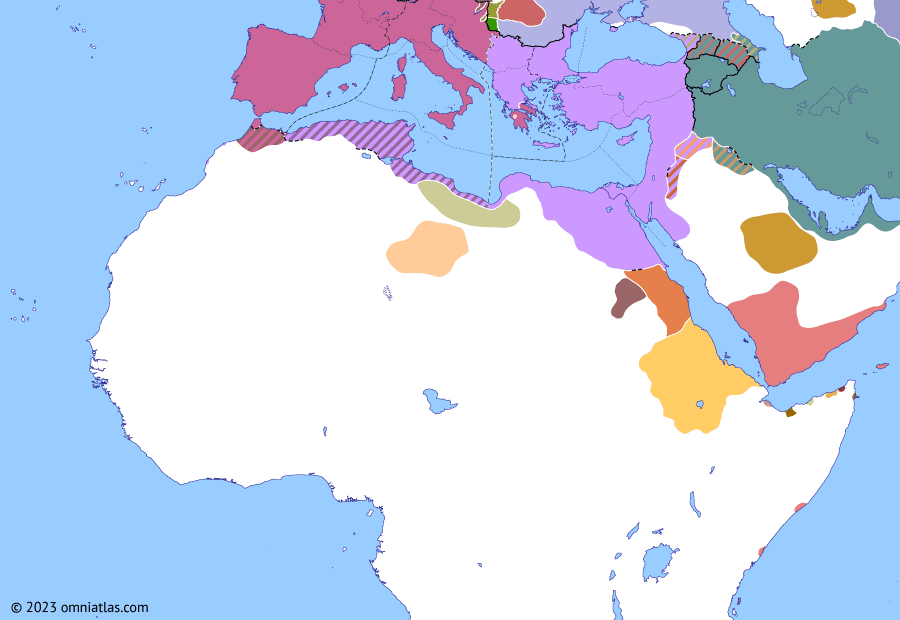Northern Africa 397: Gildonic Revolt
late 397
late 397
Gildonic Revolt
17 Jan 395 Division of the Roman Empire
late 397 Gildonic Revolt
c. 400 Emergence of Makuria
sum 407 Constantine III
spr 409 Gerontian Revolt
28 Sep 409 Vandalic invasion of Spain
early 410 Attalus’ African campaign
late 410 Death of Alaric
mid 411 Barbarian partition of Spain
spr 413 Revolt of Heraclian
late 414 Gothic African expedition
fall 418 Wallia’s Spanish War
early 420 Battle of the Nervasos Mountains
sum 422 Battle of Tarraco
spr 424 Joannes and Africa
sum 427 Revolt of Bonifatius
May 429 Vandal crossing to North Africa
28 Aug 430 Siege of Hippo Regius
sum 431 Second Battle of Hippo Regius
In early 395 the Western Roman generalissimo Stilicho dismissed the Goths from his service, only for them to revolt under their leader Alaric while returning home across the Balkans. When Stilicho attacked the rebel Goths in Greece in 397, the Eastern Empire came out in support of the Goths by denouncing Stilicho as a public enemy and forced him to withdraw. At about the same time Gildo, Western commander in Africa, declared for the Eastern emperor Arcadius—threatening war between the two halves of the Empire—but was quickly suppressed by Stilicho in early 398.
This map has in-depth notes in the Journal, exclusive to Patrons on Classical Tier and above. Find them in the events descriptions, marked with the Journal icon .
